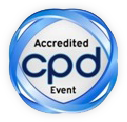
Lisa Connelly
Scottish Parasite and Diagnostic Reference Laboratory (SPDRL),UK
Title: Molecular diversity of Cryptosporidium species from human cases in Scotland
Biography
Biography: Lisa Connelly
Abstract
Cryptosporidium, a coccidian parasite has been implicated in numerous waterborne and foodborne outbreaks associated with human and livestock disease. As part of outbreak investigations, the Scottish Parasite Diagnostic and Reference Laboratory, Glasgow (SPDRL) apply a glycoprotein (GP60) PCR/DNA sequencing-based approach to determine Cryptosporidium species/subtypes from human isolates in Scotland. In 2014, 79 samples were speciated and shown to be C. parvum (n=48), C. hominis (n=29) and C. meleagridis (n=2). Eleven C. parvum isolates were sub-typed as part of outbreak investigations and consisted soley of the IIa family with 6 subtypes identified, namely IIaA13G1R2 (n=1), IIaA15G2R1 (n=2), IIaA16G2R1 (n=3), IIaA17G1R1 (n=3), IIaA18G2R1 (n=1) and IIaA21G4R1 (n=1). Eleven C. hominis isolates sub-typed as part of the same outbreak investigation were shown to be IbA10G2 (n=4) and IbA6G3 (n=7). The age of the infected patients ranged from <1-10 years (n=24), 11-20 (n=13), 21-30 (n=20), 31->60 (n=22). More females (n=48) than males (n=31) were infected and only 4 cases had travel history stated. A peak of C. parvum cases occurred during April (n=14) and May (n=12), whereas most C. hominis cases occurred later in the year during October (n=5) and November (n=13). This update demonstrates the high degree of diversity of Cryptosporidium subtypes within Scotland.

